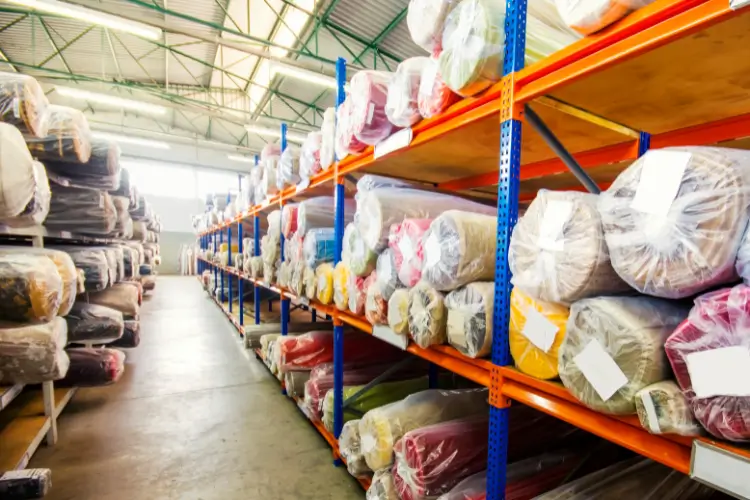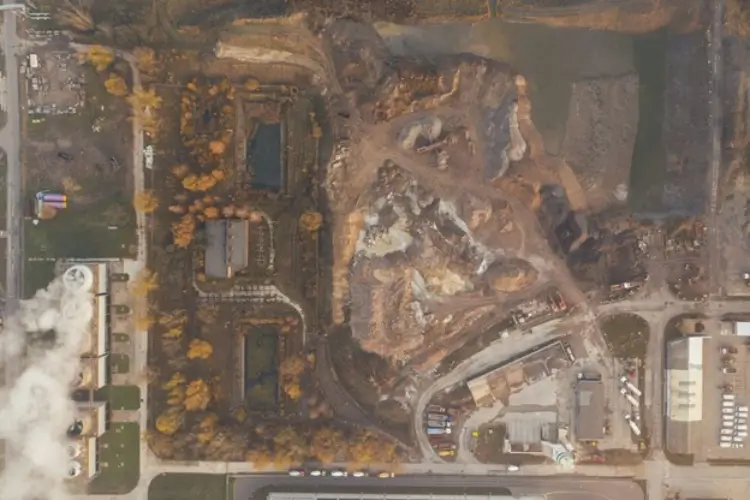The garments industry thrives on fabric – a vibrant tapestry of textures and colors that breathe life into clothing and dreams. But behind the dazzling designs lies a hidden world of meticulous organization and streamlined procedures: the fabric warehouse. Here, rolls of fabric are not just stored; they embark on a carefully orchestrated journey that ensures quality, efficiency, and timely delivery for garment production.
Fabric Warehouse Procedures
This comprehensive guide delves into the essential procedures that keep the garments industry’s fabric warehouses humming, catering to anyone involved in the process, from seasoned warehouse managers to curious fashion enthusiasts.
Laying the Foundation: Receiving and Inspection
Imagine a new shipment arriving – a truck brimming with potential. The receiving and inspection stage transforms anticipation into certainty:
- Matching expectations: Packing lists are meticulously checked against delivered fabrics, ensuring every roll arrives complete and undamaged. Accuracy forms the cornerstone of smooth production.
- Quality under the microscope: Each roll undergoes a thorough inspection for tears, stains, or irregularities. Defects are documented and communicated, safeguarding garment quality and potential claims.
- Documentation with purpose: Detailed records are maintained for each roll, including type, quantity, and identified issues. This data serves as a historical reference and facilitates informed decision-making.
Pro Tip: Color-code fabrics with identified issues for swift handling and clear communication across departments.
Weaving a Secure Home: Storage and Inventory Management
Think of storage as creating a comfortable haven for your fabric friends. Different methods cater to their unique needs:
- Shelves and racks for the social butterflies: Frequently used fabrics flourish here, readily accessible for inspiration and selection.
- Bins and boxes for the introverts: Delicate fabrics or smaller quantities find sanctuary here, safe from dust and damage.
- Pallets for the stackable crew: Bulk storage thrives on pallets, but ensure proper stacking and labeling for safety and easy retrieval.
Labeling is key: Each roll deserves a clear identity, including type, color, lot number, and any other relevant information. This fosters organization, streamlines inventory management, and prevents confusion. Remember, proper storage protects your fabrics, saves time, and minimizes waste.
Sending Fabric on Adventures: Picking and Packing Precision
Now it’s time for fabrics to embark on their next exciting journey – transforming into garments. The picking and packing process ensures precision and care:
- Orderly selection: Fabrics are meticulously handpicked based on customer orders, ensuring every detail matches perfectly, color shade to texture. Accuracy is paramount.
- Packing with love and protection: Secure packaging materials and appropriate labeling shield fabrics from harm during their journey, like sending them off on a first-class adventure.
- Barcode wizards: Consider leveraging barcode technology for faster and more accurate picking and packing, especially for large orders, streamlining the process and minimizing errors.
Bonus Tip: Train your team on proper lifting techniques to avoid injuries and promote safety, remembering that a healthy and empowered workforce is crucial for efficiency.
Safeguarding Your Fabric Oasis: Security and Safety Measures
Just like any haven, your fabric warehouse needs to be a safe and secure environment:
- Fire safety first: Smoke detectors, readily available fire extinguishers, and regular safety training empower your team to handle emergencies effectively.
- Chemical care with responsibility: Safe storage and handling procedures for dyes, finishes, and other chemicals protect both people and the environment.
- Lifting with ease: Proper lifting techniques prevent injuries and ensure the well-being of your team.
- Secure your valuables: Access control measures and secure storage areas safeguard fabrics from theft or unauthorized access, creating a safe and protected environment.
- Be prepared for anything: Develop emergency plans for various scenarios, from fires to power outages, ensuring everyone knows how to respond calmly and effectively.
Remember, safety is not just a policy; it’s a shared responsibility for everyone involved.
Embracing Innovation: Advanced Fabric Management Strategies
The garments industry is dynamic, and staying ahead requires proactive solutions:
- Automation magic: Robots, conveyor systems, and other technologies can streamline processes and boost efficiency, allowing your team to focus on higher-level tasks.
- Predicting the future: Inventory forecasting and demand planning anticipate fabric needs, preventing stockouts and overstocking, ensuring smooth production flow.
- Going green together: Implementing sustainable practices like upcycled packaging, waste reduction, and natural fiber fabrics minimizes environmental impact and aligns with evolving customer values.
By embracing innovation and continuous improvement, you can create a future-proof fabric warehouse that adapts to changing needs and contributes positively to the industry.
Beyond Efficiency: The Human Touch
Remember, fabrics are not just materials; they hold the potential to transform dreams into reality. The human touch remains crucial in:
- Quality control: Experienced eyes and hands can detect subtle quality variations that automated systems might miss. A skilled inspector can discern the nuanced difference between acceptable and unacceptable fabric based on subtle variations in texture, weave, and dye distribution. This human expertise ensures garments maintain consistent quality and brand reputation.
- Problem-solving: Unexpected situations always arise, and the human ability to adapt and find creative solutions is invaluable. For example, if a fabric shipment arrives damaged, a resourceful warehouse manager can work with suppliers to find alternatives or salvage usable portions, minimizing production delays and ensuring efficient problem-solving.
- Customer relationships: Building strong relationships with suppliers and customers fosters trust and communication. Understanding their needs and concerns allows you to anticipate requirements, offer proactive solutions, and create a collaborative environment that benefits everyone. By nurturing these relationships, you go beyond mere transactions and foster lasting partnerships.
The Garment Symphony: A Continuous Journey
By implementing these essential procedures and fostering a culture of continuous improvement, you create a vibrant ecosystem that fuels the garments industry. It’s not just about managing fabric; it’s about orchestrating a symphony of efficiency, quality, sustainability, and human ingenuity.
Remember, this is just the beginning of your fabric warehouse journey. As your needs and industry trends evolve, adapt and modify these procedures to create a system that reflects your unique values and operational goals. Stay curious, embrace innovation, and keep the garment symphony playing!



